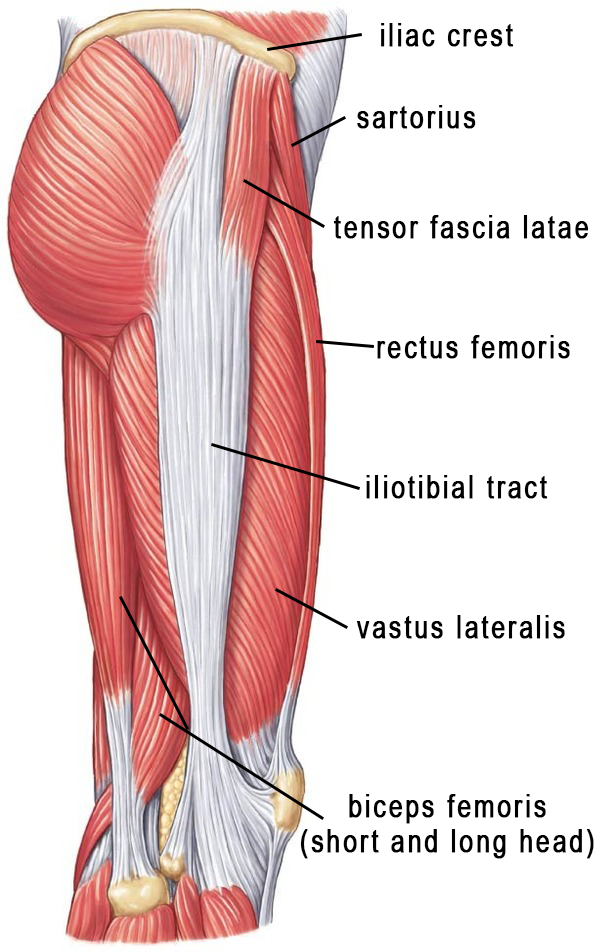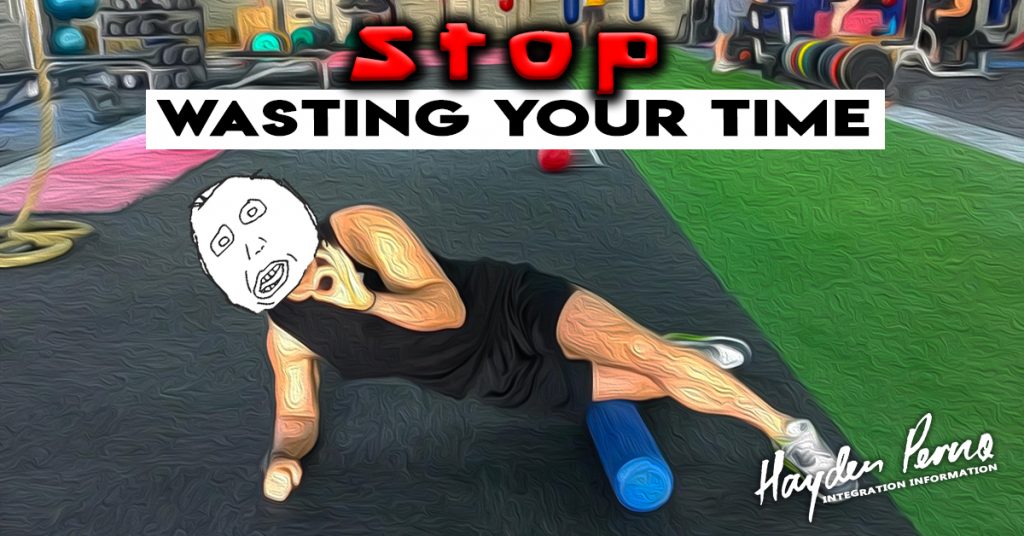Foam rolling the iliotibial band (ITB) is a popular remedy for knee and/or hip pain. It is said that doing so can decrease pain found within these areas, and increase range of motion [1]. But how warranted are these thoughts? Turns out, not so much [2].
What Is The ITB?
The ITB gets its name from where it attaches: the iliac crest to the tibia bone (ilio-tibial). As for the word “band,” this is given due to it being some incredibly strong, dense connective tissue [3]. In fact, it is unlike other regions of the body that are involved in movement, as it is primarily tendinous fascia (tendon + fascia) of another muscle known as the tensor fascia latae (TFL).

The ITB also doesn’t really have motor neurons. Which means it’s not really a mover, but more of a structural sheath that aids in movement. And despite what you may think (or are told), no matter how much pressure you apply, its length and shape cannot be altered [4].
In other words, foam rolling does nothing to the ITB. It doesn’t even play a part in improving range of motion (ROM).
What Does Foam Rolling Do Then?
Foam rolling (aka., self-myofascial release) the body is generally supposed to remove tissue adhesions and diminish mechanical restrictions [5]. But when it comes to the ITB, since it is a stubborn SOB, you are simply wasting your time performing such a practice [6].
Instead, what you want to be doing is addressing the areas surrounding the ITB. This is because the entire lateral aspect of the thigh is one big system (the whole body is, mind you). It is made up of the gluteals, the TFL, the semitendinosus (a hamstring), and the vastus lateralis (a quadricep).
So by improving the tissue quality around the notoriously untamperable ITB, all while strengthening it, you can finally break free from the grievances you’re dealing with [7].
And if you’re wondering why it feels like the ITB improve post-foam rolling, here are two possible answers:
1. The nervous system dampens the experience of pain over time [8].
2. Rolling over the ITB also probably means you are rolling other areas, too (refer to picture above to see again how tightknit this whole area is).
What Should You Do?
The first step to relieve the issues you might be dealing with is to start focusing on the muscles that are involved in this system: the glutes, the TFL, the ab- and adductors, the hamstrings, the quadriceps.
We can attack these areas with a foam roller or a ball to help “unload” the tension on the ITB, thus allowing for freedom to return.
You can then do what so many people overlook when it comes to releasing: activating. This follow up will help ensure the ITB doesn’t go back to how it was.
Some great exercises to incorporate into your training are:
Stop wasting your time smashing the ITB—especially if it is already upset. You wouldn’t kick a sick dog, would you? Insult your partner after they’ve had a shitty day? Of course not!
Questions? Chuck ‘em below.

